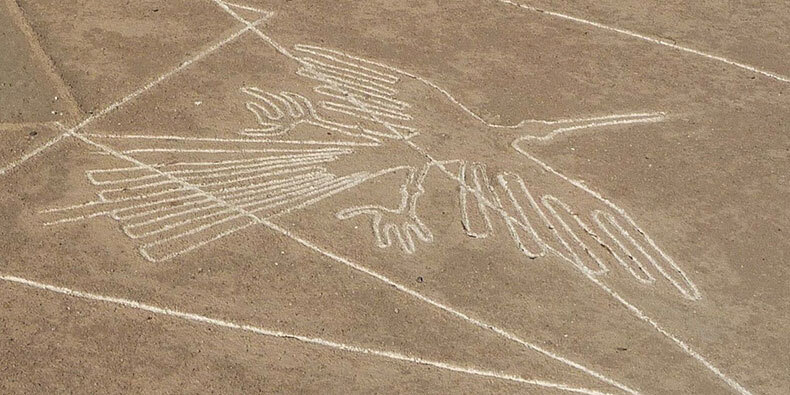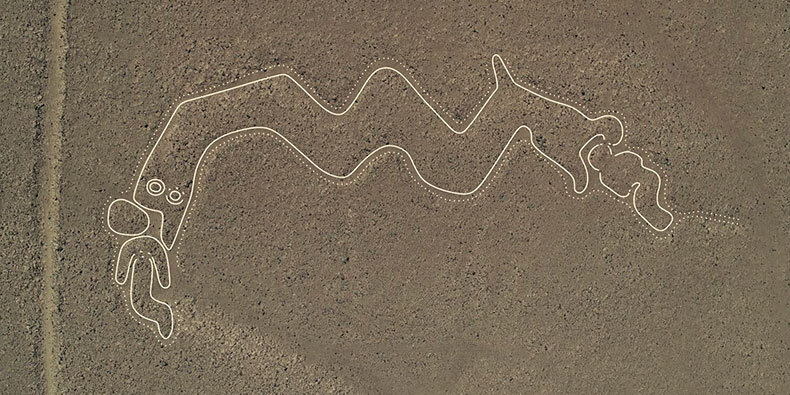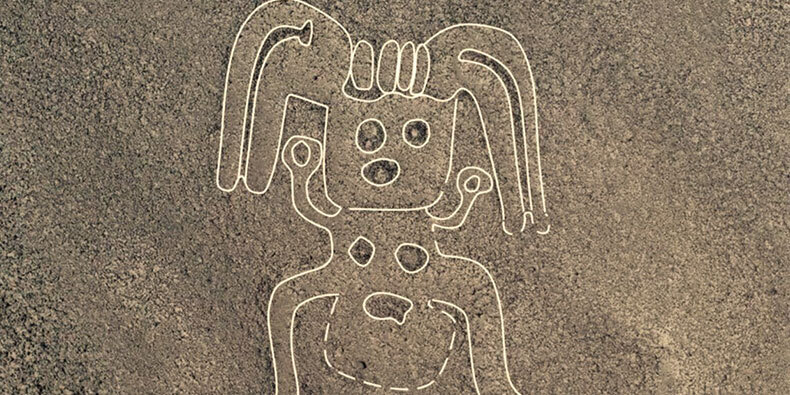Thanks to Yamagata University in Japan, 143 new nazca lines were discovered, and we are excited to show you all the details from this investigation that will eventually help us understand more about these geoglyphs!
The Nazca lines have been a mystery to our generation, becoming one of the significant discoveries and tourist attractions in Peru, receiving more than 90,000 visitors per year.
When Were The Nazca Lines Discovered?
The Nazca lines‘ first discovery led by Toribio Mejia Xesspe at the Peruvian desert in 1926 came with the complication of trying to identify these geoglyphs from ground level, which was practically impossible in those times, and it wasn’t brought to the public light until the 1930s following the invention of flight.
There were 300 geometric shapes, 70 plant and animal drawings, and 800 straight lines. Among all these geoglyphs, the most recognized Nazca lines are:
- The Whale
- The Astronaut
- The Hummingbird
- The Spider
- The Monkey
Also, thanks to the Nazca line enthusiast Maria Reiche, now we have an idea of the purpose of these geoglyphs. Her work made possible the recognition of the Nazca Lines complex as a UNESCO World Heritage Site in 1994.
Quick Tip: The best way to get to Nazca is with Peru Hop as you can uniquely discover Peru in the safest way possible. If you’re planning to join the flight over the Nazca lines, Peru Hop offers short trips from Lima where you can enjoy this and more exciting activities!

New Nazca Lines Discovery: Studies and Investigation
The Yamagata University led an investigation in the Nazca pampa and its surroundings, which resulted in the discovery of more than 140 new Nazca geoglyphs. These successful studies date back to 2004 when Professor Sakay and other researchers from the same university, engaged in initiatives to study the Nazca lines, but it wasn’t until 2018 and 2019 that they discovered the new Nazca geoglyphs through fieldwork and analyzing high-resolution 3D data.
Professor Sakai and he’s researchers used IBM’s Artificial Intelligence Technology to help identify with accuracy all the new Nazca lines discovered. They believe these new geoglyphs date back to at least 100 BC and 300 AC. This group of researchers is looking forward to the preservation of this discovery since most of the geoglyphs are in grave danger and almost disappearing because of the urban expansion in the surrounding areas.
New Nazca Lines Categories

The 143 new Nazca lines discovered in the Nazca pampa and its surroundings were categorized into two main types:
Type A -Comprehends all the geoglyphs that were made by removing stones to form lines with the white sand beneath. These types of geoglyphs are on a larger scale and date back to the early Nazca culture period. The animal drawings are believed to be ritual places where the communities held ceremonies. The longest type A Nazca line stretched over 100 meters.
Type B -Are all the geoglyphs that were made by forming solid-colored surfaces and measure less than 50 meters. The smallest type B Nazca line was less than 5 meters long. These new Nazca geoglyphs’ design purpose was to be looked at and to mark paths.
From all the new Nazca lines discovered, the most impressive are:
- The Humanoid Figure (About 10 meters long)
- Two-Headed Snake (Approximately 30 meters long)
- The Fish (Almost 20 meters long)
- Humanoid Geoglyph holding a Cane (Nearly 4 meters long)

The Mystery of the Nazca Lines
There are different theories about the real purpose of the Nazca lines, according to Maria Reiche, the concept of the carvings is the representation of astronomical events such as the southern hemisphere winter solstice. Now we have different concepts and it is believed that most of the geoglyphs were made with religious purposes.
Erich Von Däniken held a theory about the Nazca lines that points to the use of the Nazca pampa as a landing field for an extraterrestrial spacecraft. As well, it is believed to be a water-cult ritual site since this area only receives 20 minutes of rain a year.
These are a few of the many different theories and design concepts of the Nazca lines, currently, researchers are looking forward to understanding this outstanding work of the Nazca culture.
At the moment, the real purpose of these geoglyphs will remain a mystery. Thanks to all the research that took place in the Nazca pampa and surroundings now, it is possible to know and comprehend even more about the Nazca ancient culture.
Without this great work, it wouldn’t be possible to preserve the Nazca Lines or to visit this tourist attraction in southern Peru, this place being one of the perfect destinations for those passionate of history.

Keep in mind that you can visit this outstanding location by taking a tour, if you want to learn more about how to get to the Nazca lines, take a look at our guide.